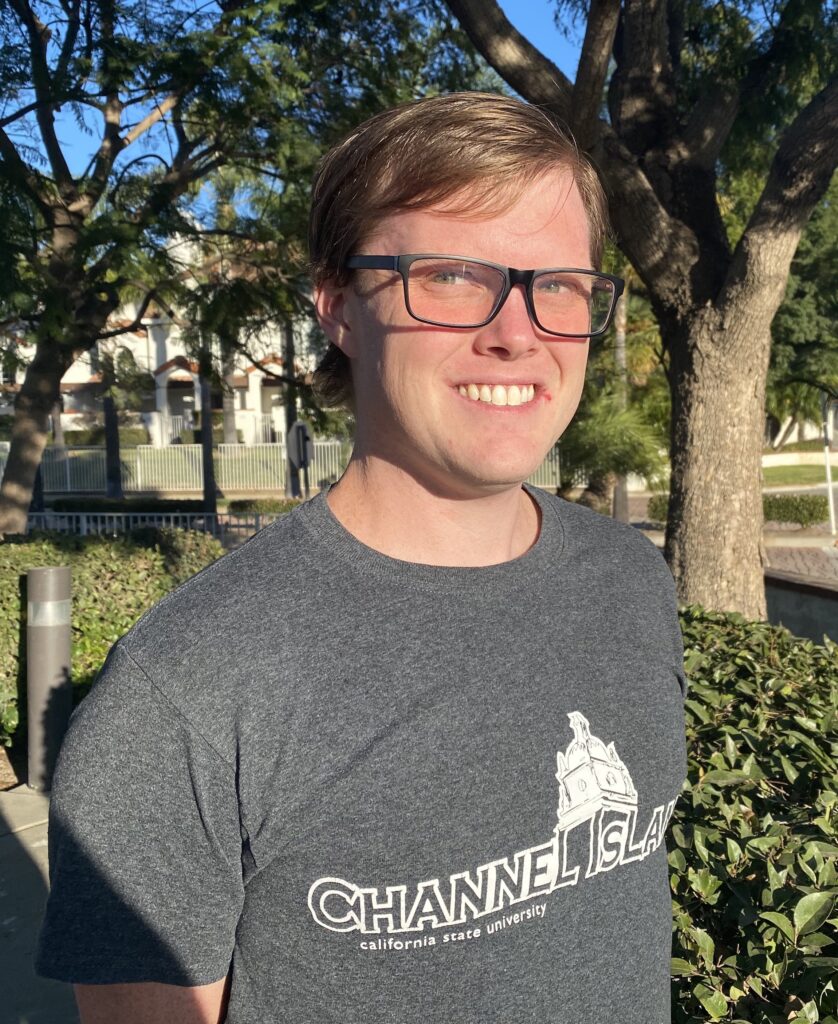CAMARILLO — CSU Channel Islands (CSUCI) Computer Science Lecturer Ryan McIntyre wrote his master’s thesis, he hoped his mathematical analyses could be used to enhance DNA processing.
No one was more surprised than he was to learn that graduate students in the Department of Aeronautics and Astronautics at the Massachusetts Institute of Technology (MIT) had discovered his published thesis, “Bounding the size of minimal clique covers,” in the 2018 Journal of Discrete Algorithms.
Not a journal everybody reads, but the MIT group was impressed enough with McIntyre’s findings that they decided to apply them in their own research into problems with satellites.
“Even if the results seem very theoretical, many real applications, such as how to position the beams of satellites over the earth, can be transformed into clique cover problems,” explained the lead author on the MIT research paper, Nils Pachler de la Osa. “For this precise reason, results like those presented on this work are very beneficial for the general understanding and resolution of these problems.”
McIntyre’s research basically details a way to connect data that seems unrelated by finding things they may have in common. It’s helpful when it comes to processing DNA as some pieces of a DNA strand may be missing. This formula helps fill in those blanks.
“I was trying to take indeterminate strings of data where some pieces are missing, and trying to find common repeated words or sequences,” McIntyre said. “It’s useful in many contexts. For example, if you could use it with social networking. For each friend, you find out what each group had in common—maybe common friends—it’s completely the same math program.”
A mathematician at heart, McIntyre earned his undergraduate degree in Mathematics at California Polytechnic State University in Pomona, then went on to earn his graduate degree in Computer Science from CSUCI in 2018. He then joined the faculty as a lecturer.
McIntyre had high praise for Chair and Professor of Computer Science Michael Soltys, Ph.D. crediting Soltys’ mentorship for helping McIntyre to write a thesis that could capture the attention of MIT researchers.
“I would show up during his office hours, unannounced, and just barge in and say ‘Michael! I made this breakthrough!’” McIntyre said. “And I would write it on his white board. He is so fast! He got it within five minutes and would point out things I might want to consider.”
McIntyre hopes to further hone his skills as a lecturer and eventually enter the field of computational genomics. Soltys believes McIntyre will thrive with whatever he chooses.
“Ryan is a great student,” Soltys said. “He’s inquisitive, intellectually mature and with a rare mathematical gift.”
About California State University Channel Islands — CSU Channel Islands (CSUCI) is reimagining higher education for a new generation and era. We are an innovative higher education institution that enables students to succeed and thrive – serving as an engine for social and economic vitality that provides the intellectual resources necessary for a thriving democracy. With more than 7,000 students, 1,200 employees and 14,000 alumni, CSUCI is poised to grow in size and distinction, while maintaining one of the most student-focused learning environments in public higher education. Connect with and learn more by visiting www.csuci.edu or CSUCI’s Social Media.

